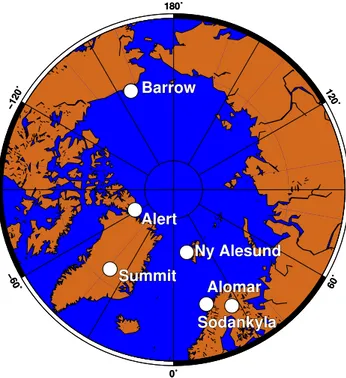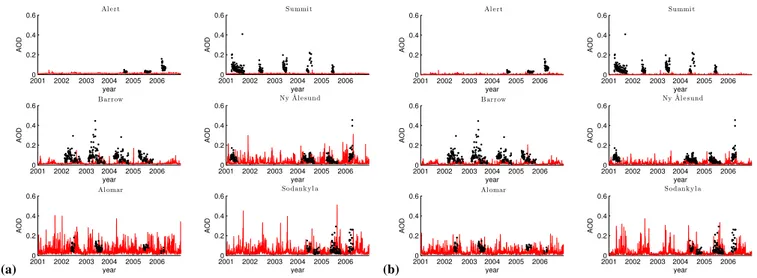Aerosol optical depth over the Arctic: a comparison of ECHAM-HAM and TM5 with ground-based, satellite and reanalysis data
Texto
Imagem




Documentos relacionados
The comparison of aerosol optical depth (AOD) from HAC against MODIS shows larger HAC AOD values over regions with higher aerosol loads and smaller HAC AOD values than MODIS for
over the NDACC subtropical station Izaña and a prelim- inary comparison with SCIAMACHY satellite instrument, finding good agreement between them (1.1 % differences).. Dirksen
The satellite cloud parameters cloud top height (CTH) and liq- uid water path (LWP) are compared with ground-based CTH obtained from a cloud mask created using lidar and radar data and
In this paper, numerous key uncertain factors in the retrieval of aerosol optical depth (AOD) are articulated for some widely used and relatively long satellite aerosol
We correlate the monthly mean aerosol optical depth (AOD) at 670 nm to the monthly mean surface extinction and the fraction of observations where the visibility is below 1– 10
C.: Improvement of aerosol optical depth retrieval from MODIS spectral reflectance over the global ocean using new aerosol models archived from AERONET inversion data and
depth (AOD) data, produced by a merger of AOD product data from the Moderate Resolution Imaging Spectroradiometer (MODIS) and the Multiangle Imaging Spectro- radiometer (MIRS), is
We use satellite observations of aerosol optical depth (AOD) from the Moderate Resolution Imaging Spec- trometer (MODIS) together with the GEOS-Chem global chemical transport model


